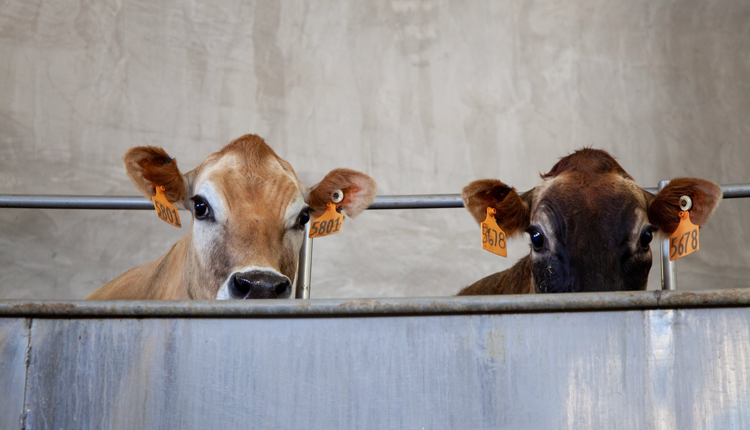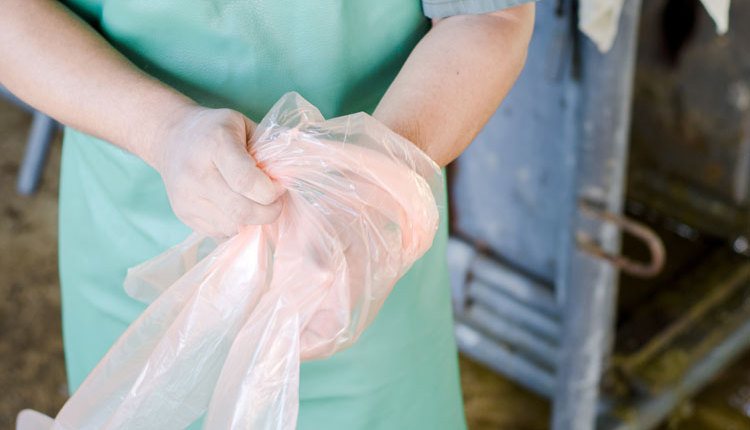
Many factors play a role in successful reproduction. In this column, we’ll focus on the relationship between genomics, milk yield, characteristics and detection of estrus, and fertility.
A few years ago, I was a member of a research team investigating cow conception rate at first A.I. service and repeated A.I. services required for pregnancy. We collected blood from primiparous (first lactation) Holstein cows and extracted DNA for genomic analysis. Records were analyzed following A.I. with conventional semen at observed estrus and pregnancy diagnosis by palpation 35 days after A.I. Animals with health events (fever, mastitis, metabolic issues, and respiratory disease) were removed from the dataset.
Different controls
Genomic analyses for cow conception rate compared cows pregnant to first service (n = 494) to those open following first service (n = 538), which included those that never became pregnant. This revealed 282 loci (unique chromosomal locations) associated with cow conception rate.
For repeated A.I. services required for pregnancy, our genomic analyses compared cows pregnant to first A.I. service (n = 494) to those pregnant at fourth A.I. service or greater (n = 472) and identified 134 loci associated with number of A.I. services in primiparous cows.
None of the loci described for primiparous Holstein cows were associated with milk production.
Additionally, University of Florida researchers investigated single nucleotide polymorphisms (SNPs) associated with daughter pregnancy rate (DPR) in bulls, and they reported 29 of 40 SNPs were not negatively associated with milk yield.
Taken together, we see that milk yield and fertility are largely under different genetic control; therefore, it should be possible to select for fertility without reducing milk yield. Indeed, a quick look at the Council on Dairy Cattle Breeding website shows the estimated breeding value for both milk and cow conception rate in U.S. Holsteins continues on an upward trend.
But if that’s true, why does it appear to be more difficult to achieve pregnancy in high-yielding cows? Let’s look at the relationship between characteristics and detection of estrus with milk yield and fertility.
A consistent relationship
University of Wisconsin-Madison researchers used an electronic heat detection system to investigate the behavioral estrus characteristics of high-yielding dairy cattle. This system includes a transmitter contained in a patch that is glued to the tail head, a receiver, and supporting software. When activated by a mounting animal for a minimum of two seconds, the transmitter emits a radio wave that includes transmitter ID number, date, time, and duration of activation.
Approximately 300 Holstein cows were divided into low and high milk production groups (average production per cow was 74 and 102 pounds per day, respectively). Milk yield affected the average duration of estrus as high-producing cows exhibited a shorter estrus than low producers (6.2 versus 10.9 hours, respectively).
The average number of standing events were fewer for high- compared with low-producing cows (6.3 versus 8.8, respectively). Further, nearly 54% of estrus periods for high-producing cows, as compared to 32% for low producers, were classified as short duration, low intensity. This is why many high-producing cows will exhibit a “partial rub” where only a portion of the paint applied to the tail head in a once-daily tail paint system would be removed.
What is the relationship of milk yield and activity measures of estrus? Spanish researchers investigated over 5,800 estrus events and reported that each 2.2-pound increase in milk yield was associated with a 1.6% decline in walking activity at estrus. This moderation of activity is consistent with the reduced duration and intensity of estrus previously described.
Kansas researchers, using an ear tag-based activity monitoring system, reported 2.5 minutes less high activity at estrus for each 2.2-pound increase in milk yield. Overall, cows producing less than 101 pounds on the day of estrus exhibited 32 minutes more high activity than higher yielding cows. Primiparous cows exhibited 36 minutes more high activity compared with multiparous cows on the day of estrus, as average milk yield was nearly 22 pounds greater in multiparous cows. Reports of activity are positively correlated with many characteristics of behavioral estrus, including standing to be mounted, mounting herdmates, and chin resting.
Take a complete approach
Although the mechanism by which high milk production alters the expression of estrus is not completely understood, Wisconsin researchers reported the plane of nutrition necessary for high milk yield raises liver blood flow and metabolic clearance of hormones.
Estradiol, a hormone produced by the preovulatory follicle, plays a significant role in reproduction, as it acts on the brain to induce behavioral estrus. Lower circulating concentrations of estradiol have been reported in high-yielding cows. Apparently, greater metabolic clearance of estradiol may contribute to the altered expression of estrus, resulting in more difficulty in identifying high-yielding cows as in estrus.
Here lies the value of an appropriate decision-making process, using secondary signs such as clear mucous discharge from the vulva and swelling and redness of the vulva. Note and utilize accurate records describing days since last A.I. or last estrus. In addition, be familiar with the characteristics described for high-yielding cows to help aid in the determination of whether such a cow is in estrus. The signs of estrus are more subtle in high as compared to low-producing cows. Happy A.I. breeding!





